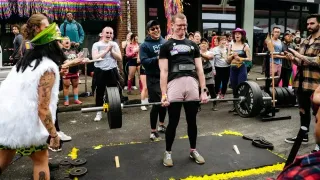December 28, 2022
FDA Approves Twice-yearly HIV Treatment
READ TIME: 3 MIN.
There is a new long-acting drug for people with highly resistant HIV who have, until now, had limited medication options. On December 22, the federal Food and Drug Administration approved Gilead Sciences' Sunlenca (lenacapavir), offering hope for heavily treatment-experienced individuals.
Sunlenca, the first HIV capsid inhibitor, is indicated for people who are unable to maintain an undetectable viral load on their current antiretroviral regimen due to resistance, intolerance or safety considerations. This group includes long-term survivors who may have used early HIV drugs one at a time or in suboptimal combinations. This approval does not include first-time HIV treatment, but ongoing studies show Sunlenca also looks promising for that indication.
"Today's approval ushers in a new class of antiretroviral drugs that may help patients with HIV who have run out of treatment options," Dr. Debra Birnkrant, director of the Division of Antivirals in the FDA's Center for Drug Evaluation and Research, said in an agency press release. "The availability of new classes of antiretroviral medications may possibly help these patients live longer, healthier lives."
Sunlenca, which is administered by injection every six months after an initial dose of pills, is now the longest-acting antiretroviral medication. Sunlenca injections and tablets are expected to cost $42,250 for the first year and $39,000 per year thereafter, according to Reuters.
Previously, the longest-acting treatment was ViiV Healthcare's Cabenuva (injectable cabotegravir and rilpivirine), which can be administered every one or two months. However, while Cabenuva is a complete regimen, Sunlenca must be combined with other antiretrovirals. There are currently no other HIV drugs that can be taken as infrequently as every six months, so it's not yet possible to construct a complete twice-yearly regimen. But Gilead and other companies are exploring new long-acting therapies, including broadly neutralizing antibodies.
While HIV treatment requires combination therapy to prevent the development of resistance, a single drug can be adequate for HIV prevention. Sunlenca is being tested as a long-acting PrEP option, with promising results so far. The longest-acting existing PrEP option is ViiV's Apretude (injectable cabotegravir alone), which is administered every other month.
Last week's approval comes after a delay while Gilead resolved manufacturing issues. The FDA placed a clinical hold on Sunlenca trials late last year due to concerns about the glass vials used for the injectable formulation. But in May, the FDA lifted the hold and allowed trials to resume after Gilead switched to a different type of glass.
Study findings
The approval of Sunlenca is supported by data from the CAPELLA study, which included 72 treatment-experienced people with highly resistant HIV who were currently on antiretroviral therapy but unable to maintain viral suppression. Nearly two thirds had advanced immune impairment with a low CD4 cell count.
In the first cohort, 36 participants were randomly assigned to add either Sunlenca or placebo pills to their failing regimen for 14 days. At that point, everyone was offered Sunlenca injections every six months plus an optimized background regimen consisting of the most active drugs available to them, selected by resistance testing. Another 36 people in a nonrandomized cohort all started on Sunlenca pills plus an optimized background regimen followed by twice-yearly Sunlenca injections.
At this year's Conference on Retroviruses and Opportunistic Infections in February, researchers reported that 83% of participants in the randomized cohort had an undetectable viral load after 52 weeks of treatment. The response rate was highest, at 94%, for people with two or more active drugs in their optimized background regimen. It fell to 67% for those with no other fully active drugs, but this is still an impressive outcome for people with such highly resistant HIV.
CD4 counts increased by an average of 82 cells, and the proportion of people with a CD4 count of 200 or higher rose from 25% to 60%. Sunlenca was safe and well tolerated, and no drug-related serious adverse events were observed. The most common side effect is injection site reactions such as pain, redness or swelling.
"The availability of new classes of antiretroviral drugs is critical for heavily treatment-experienced people with multi-drug resistant HIV," CAPELLA investigator Dr. Sorana Segal-Maurer of Weill Cornell Medicine said in a Gilead press release. "[L]enacapavir helps to fill a critical unmet need for people with complex prior treatment histories and offers physicians a long-awaited twice-yearly option for these patients who otherwise have limited therapy choices."
Help keep the Bay Area Reporter going in these tough times. To support local, independent, LGBTQ journalism, consider becoming a BAR member.






